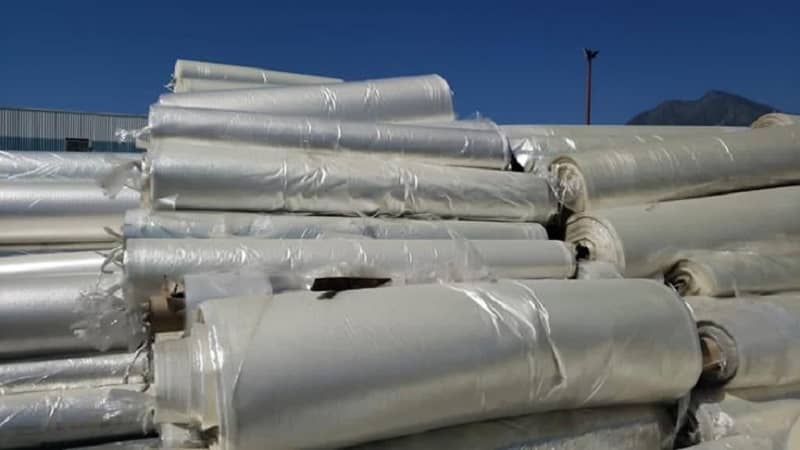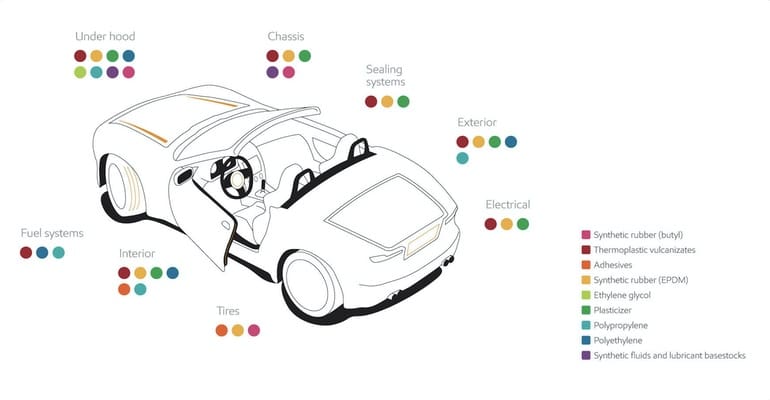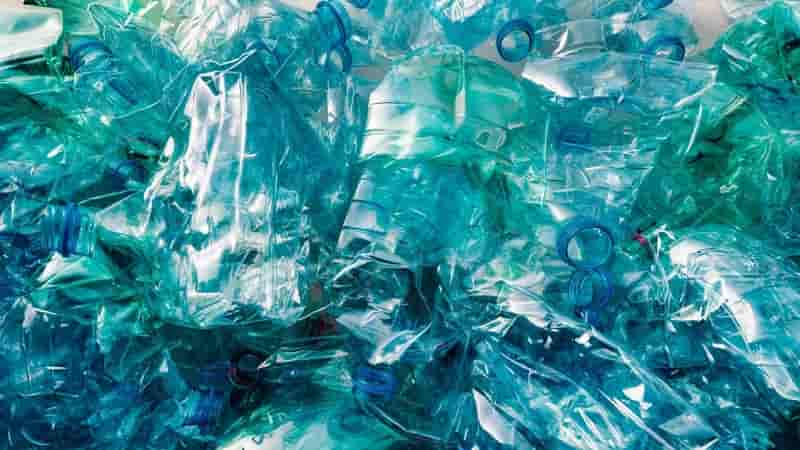Automotive-Interiors-PP – Plastic-recycling 25-04-2022 - Arhive
Automotive-Interiors-PP – Plastic-recycling
-Blackrock Plastics adds trading capacity
South Carolina-based company cites demand for recycled-content polymers.
Charleston, South Carolina-based Blackrock Plastics LLC says it has undertaken a recent office expansion to accommodate increased business demand. The company, which describes itself as an established buyer and seller of post-industrial recycled plastics, says it specializes in purchasing post-industrial plastic scrap and selling recycled plastics.
Blackrock says its locations in different parts of the United States combined with the recent office expansion will allow it to better serve existing clients efficiently and handle an influx of new business.
“With the market being so tight due to the lack of supply of virgin material, we’re still growing, with increased demand for our plastic scrap,” says Jim Kevany, a director at Blackrock Plastics. “We’ve learned to adapt to different market conditions, responding to our increase in demand with our recent office expansion. We look forward to continuing to provide top-quality, streamlined services for both our buyers and sellers.” Automotive-Interiors-PP – Plastic-recycling
Among the grades of post-industrial plastic scrap Blackrock buys are low-density polyethylene (LDPE), Nylon, high-density polyethylene (HDPE), polypropylene (PP), bulk shipping sacks, thermoplastic olefin (TPO), thermoplastic elastomer (TPE), purgings and plastic regrind.
“The strain on global supply chains has caused demand for post-industrial plastic scrap to steadily increase,” states the company. In response to the uptick, Blackrock says it is equipping its staff “with the necessary resources to keep up with demand.”

-REACH revision to reduce exposure to harmful substances: Cefic
The REACH revision is an opportunity to continue reducing exposure to the most harmful substances and continue building a predictable regulatory system that enables industry and authorities to focus resources where it matters the most, including development of safe and sustainable alternatives, where needed and simplifying administrative processes, Cefic said in its statement on the revision of REACH. Automotive-Interiors-PP – Plastic-recycling
On the revision, the European Chemical Industry Council (Cefic) believes that today more than ever Europe needs a robust domestic chemical industry to reduce strategic dependency on other regions. The role of REACH is therefore to keep the industry’s engine of growth and innovation running at full speed whilst raising the bar on safety.
The chemical industry will go through a ‘double twin’ transition (climate neutrality, Chemicals Strategy for Sustainability, circularity and digitalisation). Prioritising regulatory actions that bring the most benefits to health and environment, keeping the regulatory framework as stable as possible, and maintaining coherence of REACH with all other pieces of EU legislation should be the guiding principles of the revision. Last but not least, advances in risk assessment methods, human and environmental monitoring, predictive toxicology and alternatives to animal testing need to be reflected in this revision, Cefic said in a press release.
In particular, Cefic has called on the European Commission to focus its attention on the key aspects when developing legislative proposals. This is a landmark opportunity to accelerate development, validation and regulatory acceptance of human-relevant animal-free approaches to assess safety of chemicals. On generic approach to risk management, Cefic has recommended prioritising consumer uses with a high likelihood of exposure to the most severe hazardous chemicals. A committee with a political mandate and accountability would need to be set up to make choices as to what should be considered essential or not.
Polymers recognised globally as Polymers of Low Concern based on the experience of other non-EU agencies should be excluded from registration. Available evidence supports a targeted implementation of the Mixture Assessment Factor (MAF) for environmental risk assessments. Automotive-Interiors-PP – Plastic-recycling

–Asia does not reach agreement on April contract prices for paraxylene
Negotiators to agree on April’s contract prices for paraxylene in Asia have failed to reach an agreement for the current month, market sources told ICIS.
According to them, the approval of the monthly contract price for the material is achieved when it is agreed by at least two suppliers and two buyers.
This is the fourth month in a row this year that the contract price of paraxylene remains uncoordinated. Automotive-Interiors-PP – Plastic-recycling
Price offers in Asia for April are at the level of USD1,320-1,350 per ton, CFR Asia, against counter-bids in the range of USD980-1,050 per ton, CFR Asia.
Paraxylene is one of the main raw materials for the production of polyethylene terephthalate (PET).
According to the ICIS-MRC Price Review, the situation in the Russian PET market in mid-April remained the same. Russian plants traditionally sell the main volumes of PET under formula contracts. Automotive-Interiors-PP – Plastic-recycling

-Braskem plans to raise PP prices in the US in May
Braskem America plans to raise the price of polypropylene (PP) by 6 cents per pound (USD132 per ton) in May, the company said.
Polypropylene supplies have recently declined due to some unplanned repairs and the announcement of force majeure, which has led to an increase in spot prices.
Demand from the packaging and automotive sectors remains stable, while the consumer goods segment has seen some decline.
Earlier it was reported that ExxonMobil plans in May to increase the price of polypropylene (PP) by 6 cents per pound (USD132 per ton). In addition, TotalEnergies Petrochemicals also plans to raise PP prices in may in the US by a similar amount. Automotive-Interiors-PP – Plastic-recycling
According to MRC’s ScanPlast, PP supplies to the Russian market by the end of 2021 amounted to 1,494.28 thousand tons (calculated according to the formula production + import – export), which is 21% more than a year earlier. Supplies of propylene homopolymer (PP-homo) and propylene block copolymer (PP block) increased. The supply of propylene stat copolymer (PP-random) has been significantly reduced.

-Lightweighting Win: New Polypropylene Opens Automotive Doors to New Interior Uses
Automotive design engineers have long wrestled with polypropylene (PP) to lightweight large interior panels. The latest PP impact copolymer development comes closest to “easy” with greater ductility, gap tolerance, and more.
Lightweighting is an ongoing need in the automotive industry, and plastics continue to play a key role for innovations in internal combustion engine (ICE) vehicles as well as electric vehicles (EVs). Whether the goal is to shed weight to improve fuel economy or to compensate for heavy battery packs, automakers (OEMs) and suppliers are subject to ever-increasing market demands as well as requirements. The latest and perhaps most market-disrupting development among them — the Biden administration’s carbon reduction targets — affect both the ICE and EVC worlds. Automotive-Interiors-PP – Plastic-recycling
Plastics, therefore, remain front and center in the search for new and better lightweighting solutions. Today, plastics represent about 50 percent of the volume of the vehicle but only account for 10 percent of total weight. Even after decades of innovation, however, there remain challenges and new frontiers to cross. Polypropylene resins, whether used in compounds or pure (i.e.,“neat”) resin form with no fillers, provide a prime example of these challenges and new frontiers.
For this discussion, we will focus on interior challenges and innovations.
Impact copolymer, evolved
Automotive interiors present a particular challenge to lightweighting with neat resins, which are used for trim pieces and panels. However, they cannot always meet the demands of more challenging applications, which we discuss below. Factors such as material performance, manufacturing/machineability, look-and-feel, cost, and other factors must be balanced to allow for a lightweighting substitution.
Polypropylene offers low density, hence low weight, especially relative to compounds such as thermoplastic olefin (TPO). Automotive-Interiors-PP – Plastic-recycling
Specifically, polypropylene impact copolymers (ICPs) are widely used for many trim pieces and panels. They still, however, face performance challenges that limit applications involving large and complex parts.

–New 2020 U.S. plastic recycling data report highlights need for increased industry -investment
The 2020 U.S. Post-consumer Plastic Recycling Data Report has highlighted that like most industries, plastics recycling faced significant challenges through the COVID-19 pandemic. Major disruptions in collection and transportation, staffing shortages, and supply chain issues impacted the supply of material available for recycling. Despite those challenges, the trend of more U.S.-sourced post-consumer plastics acquired for use by reclaimers in North America continues. Of the post-consumer plastics sourced in the U.S., only 8 percent was exported overseas. Automotive-Interiors-PP – Plastic-recycling
Sponsored by the Association of Plastic Recyclers (APR), the Foundation for Plastic Recycling, The Recycling Partnership, and the U.S. Plastics Pact, the 2020 U.S. Post-consumer Plastic Recycling Data Report, by Stina inc., is based on surveys by Stina and the National Association for PET Container Resources (NAPCOR). The report presents the findings of the major post-consumer plastic categories recovered for recycling, including bottles, non-bottle rigid plastics, film, and other plastics.
“We need more supply. Our industry faces significant challenges that require immediate solutions. We need to focus our efforts on technologies that are up and running today. Mechanical recyclers have the capacity to process more material but lack the supply to meet the current demand for post-consumer resin (PCR),” says Steve Alexander, APR president and CEO.
“Expanding and streamlining recycling collection programs, less confusion with labelling, and reducing contamination through design for recyclability should be key priorities.” Automotive-Interiors-PP – Plastic-recycling

Automotive-Interiors-PP – Plastic-recycling
